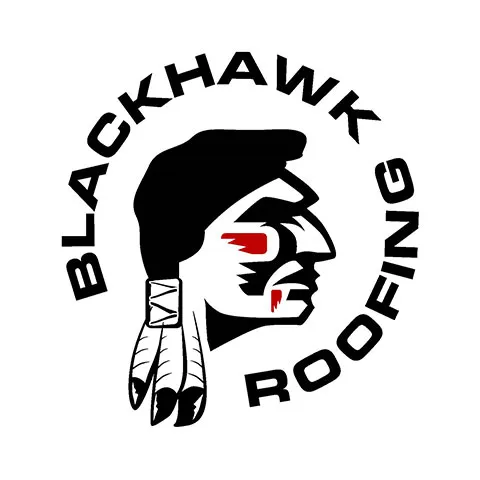
What's included with a roof replacement?
Most of your roofing system components and accessory items will be replaced when you get a residential roof replacement.


What does the roof replacement process look like?
Every part of your roof has a crucial job to keep you and your family protected from the elements. Most of your roof system's components and accessories will be replaced when you get an asphalt roof replacement. But your decking might be left alone if the boards are still in good condition.
Residential roof installation is comprised of multiple layers of materials. Roofing materials such as shingles, underlayment, metal flashing, and insulation make up the roof surface. These components work together to form a complete roof system that protects your home from any external weather events such as harsh rain and snowfall. In order to ensure a long-lasting and secure roof system, it is essential to understand the importance of each material and how they interact with one another in order to maintain structural integrity. By understanding what goes into the residential roof installation process you can be sure that your home is always well protected against any kind of weather that may cause damage to your property.
1. Roof decking
Residential roof installation decking is an important part of the process, as it is what your shingles and other components are attached to. Decking can come in various shapes, sizes, and materials, which should be chosen based on the project’s requirements. In some cases, we may have to replace your roof’s decking in order to properly install roofing components when you get a roof replacement – this isn’t something that can be determined until we tear off the old roof though. If rotten deck boards emerge during this stage, they will need to be replaced prior to installation to guarantee the integrity of the frame. However, if the original deck boards present a sound structure for the new asphalt roof, then no replacements are necessary.
2. Roof flashing
Residential roof flashing is essential for any home, providing an important layer of protection from weather elements. Roof flashing is metal placed anywhere your shingles butt up against something like a wall, chimney, or in open valleys. In some cases, such as when you're upgrading from a 3-tab to dimensional asphalt shingle, roof flashing will need to be replaced. If existing flashing looks undamaged and the integrity of the metal remains true, it can stay as-is with no need for replacement. Being observant about checking for any possible damage and potential replacements is key in ensuring that your home retains full protection from inclement weather conditions.
3. Underlayment
Residential roof underlayment is a necessary part of any rooftop system. It is a felt or synthetic material that serves to protect the decking underneath, ensuring it withstands the elements for years to come. Without investing in quality underlayment during your roof replacement, you risk leaving your home exposed to potential damage from rain and snow. The ultimate goal of this crucial component is to prolong the life of your rooftop system; with good quality underlayment, you’ll know that your decking will remain safe and secure well into the future.
4. Drip edge
Residential homes require a drip edge, also known as metal flashing, at the edge of the roofing to ensure that water is directed away from the fascia and constituents of the exterior structure. When an asphalt roof replacement is due, usually the old drip edge must be removed and replaced with a new one in order to successfully protect your property from potential water damage. An appropriately fitted and functional drip edge can provide excellent safeguard against weather conditions such as wind-driven rain, ice dams, wind-whipped snow, etc., so it's important to make sure not only that you have one installed but that it is also up to code and in proper condition.
5. Ice and water shield
Residential roof ice and water shielding is an essential component of having a functioning and waterproof roof. As the name implies, it shields against the flow of water in two ways by preventing both ice dam formation as well as against water damage. It can provide extra protection against snow and rain in areas such as your roof valleys that are more prone to leakage. The importance of installing new ice and water shield correctly around all your roof penetrations during a replacement should not be overlooked, as failure to do so may mean that you'll lose out on some of its benefits.
6. Asphalt shingles
Residential roof asphalt shingles are typically the first thing people think of when they hear the words “roof replacement”. However, while shingles play a major role in your entire roof system, they are not the only component to consider when you need a complete replacement. Your entire roof is made up of different materials and components designed to all work together for maximum protection against any external elements. As such, when replacing your roof, it’s important to pay attention to more than just the visually apparent shingles on top. Doing so will ensure that your newly replaced roof is ready for whatever weather Mother Nature has in store.
7. Ridge capping
Residential ridge caps are a crucial component of any roofing system and must be replaced during a roof replacement. Ridge capping, which is the trim installed at the peak where two roof slopes meet, is thicker than regular shingles and pre-bent so it follows the ridges of your roof. Residential ridge caps are designed to cover up exposed nails from other components such as tiles and shingles, therefore preventing rain water from seeping in through these vulnerable points. Additionally, they create an aesthetic appeal that contributes to the overall look of your home. All in all, proper installation of residential ridge caps is integral to ensuring your roof not only looks great but protects you from potential leaking or structural damage due to loose shingles or bad weather conditions.
8. Roof vents
Residential roof vents ensure your attic has the proper ventilation to prevent trapped hot and cold air from compromising your roof. An attic with inadequate airflow will reduce the life of a roof, meaning you’ll need to get it replaced sooner rather than later. Fortunately, modern roof replacement solutions include a set of roof vents that can help keep your attics primed for clear and constant airflow. You always have the option to upgrade or replace your existing roof vents depending on your needs and budget. Keeping residential roof vents in good condition is an essential part of maintaining any rooftop, as they act as gatekeepers to ensure this critical structure is kept up and running optimally.
9. Pipe boots
Residential roof pipe boots are an inexpensive and easy way to protect your home from water entering through the roof pipes. By covering the pipes with these rubber boots, you can prevent any leaks caused by water running down the pipe into the house. It's important that these boots are replaced when homeowners get a new asphalt roof, so they can be sure there will be no issues with their homes. Not only do these boots keep water out of the house, but they also add an extra layer of insulation, making your home even more efficient and comfortable. With residential roof pipe boots you can rest assured knowing your home is safe from any water or air leaks caused by inadequate protection around roof pipes.
Blackhawk Roofing has built replacement roofs for thousands of residential and commercial customers in Springfield and Central Illinois. We've also done many hundreds of roof repairs. Blackhawk Roofing provides outstanding value on every project. Call owner Dan Schnell at 217-741-6251 to request a Free Estimate.

Licensed Roofing Contractor
Blackhawk Roofing is a licensed, certified, and insured roofing contractor. We specialize in residential roofing and EPDM commercial roofing. We have repaired or replaced thousands of old and damaged roofs in Springfield and Central Illinois.
Latest posts
Proud to be the best roofing contractor in Springfield





